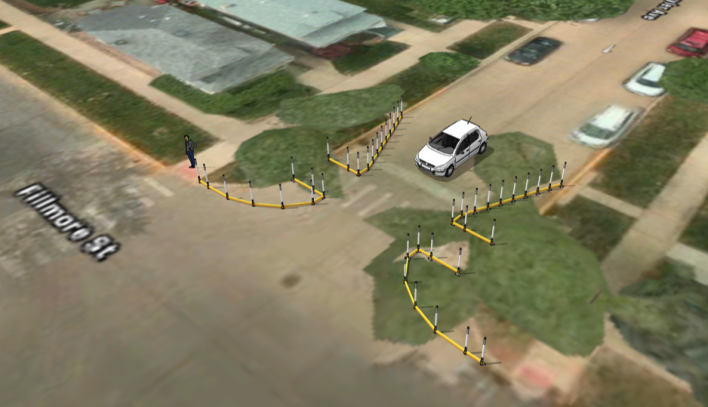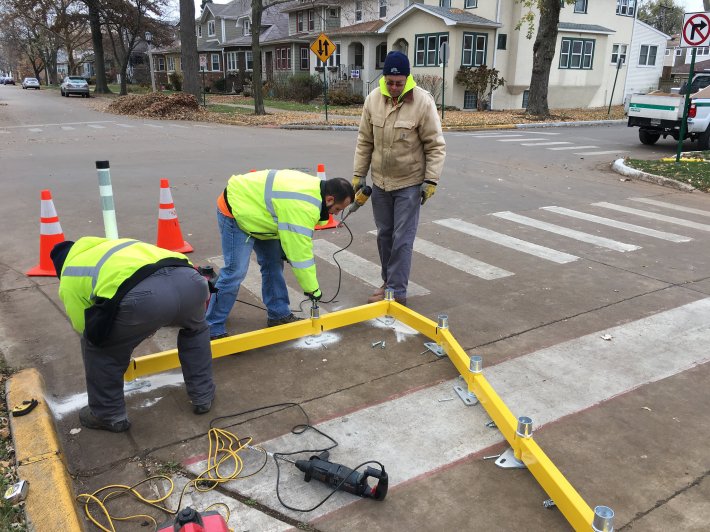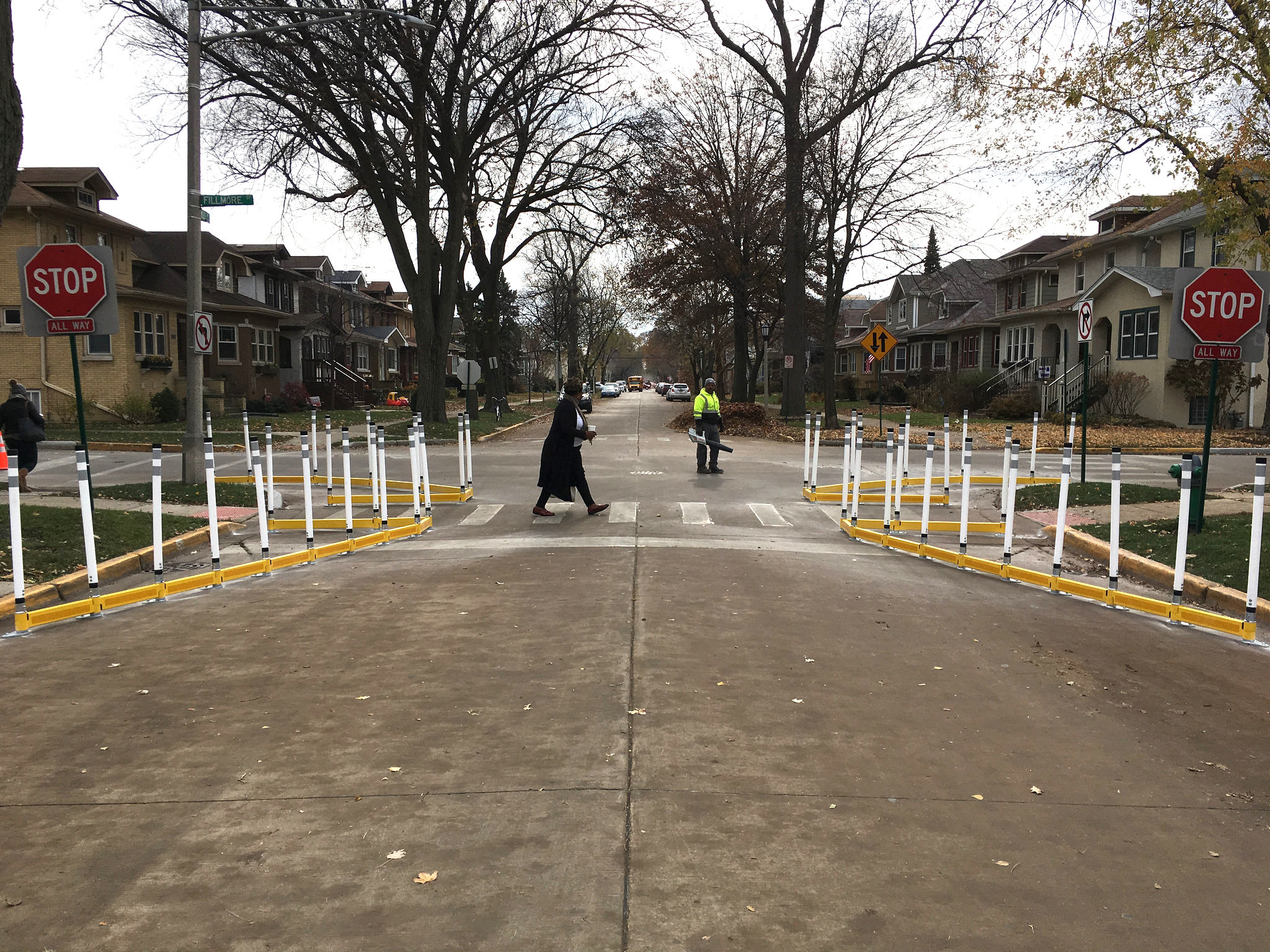Concrete pedestrian safety infrastructure, such as sidewalk bumpouts and pedestrian islands, help make walking safer and more convenient, but concrete infrastructure can cost several tens of thousands of dollars to install. Earlier this month the village of Oak Park, a suburb of Chicago, tried a relatively inexpensive, flexible strategy to test out an intersection improvement before committing to setting it in stone.

Workers installed a neckdown at Cuyler Avenue and Fillmore Street using DezignLine PedRail, a modular barrier between pedestrians and motorized traffic created by the Minneapolis-based safety infrastructure company DezignLine. The system consists of steel rails that are bolted into the pavement, with high-visibility flexible posts to help prevent drivers from running into them. The rails can be used for temporary tests, or as permanent barriers, according to the company. The materials for the Oak Park installation were manufactured by the Minneapolis-based bike rack company Dero and installed by the city of Oak Park.
The intersection is located just southeast of Washington Irving elementary school. According to Dero rep Jason Jenkins, a former Active Transportation Alliance staffer, there were previously problems with impatient drivers whipping around corners during pickup and drop-off times, resulting in children and parents nearly being struck.

The railings, which took three hours to install, reduced the pedestrian crossing distance from 31 feet to 15’8”. Jenkins noted that the project cost a fraction of the price tag for pouring concrete, and the design can easily be modified if necessary. Although a couple of sewer grates lie within the bumpouts, stormwater drainage shouldn’t be a problem since the rails sit two inches above the street.
If Oak Park finds that the rail bumpouts (the product can also be used for pedestrian islands) have similar safety benefits as concrete infrastructure, it might make sense for Chicago to try this approach using PedRail or competing products. If lower costs and more flexibility – which could help reduce the potential for NIMBY opposition to street redesign projects – result in more bumpouts and islands getting installed across the city, that would be a net win for pedestrian safety.






